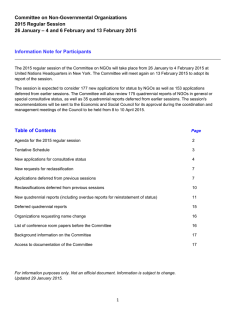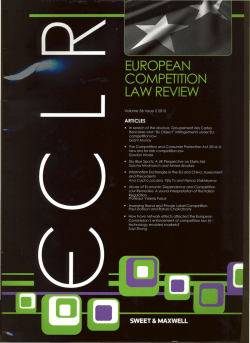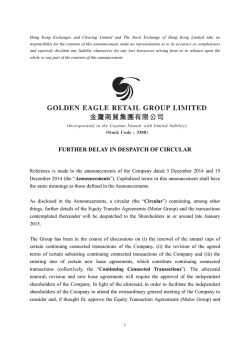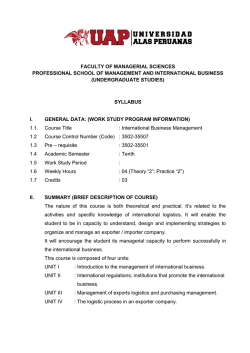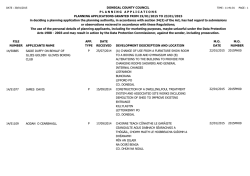
Does Corporate Rehabilitation Work?
So-called “deferred prosecutions” were developed in the 1930s as a way of helping juvenile offenders. A juvenile who had been charged with a crime would agree with the prosecutor to have his prosecution deferred while he entered a program designed to rehabilitate such offenders. If he successfully completed the program and committed no other crime over the course of a year, the charge would then be dropped. The analogy of a Fortune 500 company to a juvenile delinquent is, perhaps, less than obvious. Nonetheless, beginning in the early 1990s and with increasing frequency thereafter, federal prosecutors began entering into “deferred prosecution” agreements with major corporations and large financial institutions. In the typical arrangement, the government agreed to defer prosecuting the company for various federal felonies if the company, in addition to paying a financial penalty, agreed to introduce various “prophylactic” measures designed to prevent future such crimes and to “rehabilitate” the company’s “culture.” The crimes for which prosecution was thus deferred included felony violations of the securities laws, banking laws, antitrust laws, anti-moneylaundering laws, food and drug laws, foreign corrupt practices laws, and numerous provisions of the general federal criminal code. The intellectual origins of this approach to corporate crime can be traced back at least to the 1980s, when various academics suggested that the best way to deter “crime in the suites” was to foster a culture within companies of acting ethically and responsibly. In practice, this meant encouraging companies not only to provide in-house ethical training but also to enlarge their internal compliance programs, so that responsible behavior would be praised and misconduct policed. The approach found favor not just with some corporations (notably General Electric under the guidance of its then general counsel, Ben Heineman), but also with the US Sentencing Commission, which, in promulgating the Corporate Sentencing Guidelines in 1991, made the overall adequacy of a company’s prior internal compliance programs the most important factor in reducing (by as much as 60 percent) the size of the fine to be imposed on a company found guilty of a federal criminal violation. The Department of Justice then went a step further and, in a series of memoranda issued over the succeeding two decades, made the existence or absence of a meaningful internal compliance program an important consideration in determining whether or not to prosecute a company for crimes committed by its employees—the theory being that, if a company had a good compliance program already in place, its employees’ crimes were “aberrational” and not reflective of corporate irresponsibility, whereas the absence of a good compliance program indicated a lax corporate attitude toward crime. But the department did not stop there. In the same memoranda (variously known as the “Thompson Memorandum,” the “McCallum Memorandum,” and the “McNulty Memorandum” after the various deputy attorney generals in charge), the department stated that another important factor to be considered in deciding whether to criminally charge a company was any effort taken after the crime was uncovered “to implement an effective corporate compliance program or to improve an existing one.” This led counsel for companies that were otherwise unsuccessful in avoiding prosecution to argue, with ever greater success, that the best response to their alleged misconduct was not to punish them (and their innocent shareholders and employees) but to rehabilitate them by deferring prosecution while they instituted a more rigorous compliance program, upon the successful completion of which the charges would be dropped. It took a while for this to catch on, but in recent years deferred prosecution agreements have become commonplace, so that, between 2007 and 2012 (the last year for which data are available), an average of thirty-five deferred prosecution agreements (including socalled “non-prosecution” agreements1) were entered into each year. The three common features of most (though not all) of these agreements were the payment of a fine, the introduction of ethical training for employees, and the implementation of new or improved compliance programs, usually described in general terms such as “effective compliance” or “appropriate due diligence.” Going one step further, these three features increasingly became the hallmark of the written plea agreements that the department reached with even those companies that did not receive a deferred prosecution but instead agreed to plead guilty outright. In Too Big to Jail, Brandon Garrett, a highly regarded law professor at the University of Virginia, presents for a lay readership a detailed and comprehensive examination of deferred corporate prosecutions, and corporate criminal prosecutions generally, and concludes that they have been, on the whole, ineffective. According to Garrett, “the big story of the twenty-first century” in corporate prosecutions is that “prosecutors now try to rehabilitate a company by helping it to put systems in place to detect and prevent crime among its employees and, more broadly, to foster a culture of ethics and integrity inside the company.” But Garrett—on the basis of his own painstaking gathering of evidence (for neither the Department of Justice nor any other governmental entity keeps detailed and complete records of how such agreements are implemented over time)—finds that many, perhaps most such agreements, while often obscuring who was personally responsible for the company’s misconduct, fail to achieve meaningful structural or ethical reform within the company itself (a good example being the Pfizer cases described below). Nonetheless, Garrett does not urge the abandonment of deferred prosecution agreements, or of comparable non-prosecution agreements and corporate guilty plea agreements, but recommends instead that various steps be taken to improve their efficacy, including greater judicial oversight, greater use of court-appointed monitors, and greater attention to breaches of the agreements. The breadth of Garrett’s investigation, the wealth of detail he uses to support his conclusions, and the clarity of his prose make this an important book for laymen and experts alike. But no book can be all things to all readers, and some of the book’s basic assumptions deserve further scrutiny. To begin with, there is the assumption that criminal prosecution of corporations makes sense as a general matter. Garrett does point out in passing that “few foreign countries have anything like the broad standard for corporate criminal liability that the United States has long had in federal courts.” One might ask why this is so. Ultimately, it rests on the recognition that companies can act only through their employees, and therefore, as most nations believe, it is more appropriate to prosecute the responsible employees than the entity that employed them. Relatedly, criminal prosecution of corporations inevitably engenders collateral consequences that often seem at odds with the purposes of the criminal law. Since a corporation cannot be put in jail, the primary penalty is usually a monetary penalty, which is ultimately borne by the usually innocent shareholders. In addition, the greater the monetary penalty, the more likely the company will have to discharge many likewise innocent employees. Why should the criminal law be used to punish the innocent? It might be argued that even innocent shareholders are often beneficiaries of the misconduct, for example, when their shares increase in value as a result of a corporate fraud. But their shares will typically fall when the fraud is exposed; and even when that is not the case, the company will usually be sued civilly, thus further reducing any benefit the shareholders might derive from the fraud. As for the argument that prosecuting the company will lead the shareholders to demand new management, in this writer’s experience this has rarely been the case, except when the managers are themselves prosecuted. There may be cases in which, in addition to prosecuting the responsible individuals, it makes sense to prosecute the company because (as in the case of some family-owned or closely held companies) the company was no more than a cover for the fraud and deserves to be dissolved. One might even argue (though I would not) that prosecution of a company is warranted when the crime was committed for the benefit of the company by its high managerial agents, who are also being prosecuted. This possibility is recognized by the state laws of most of the fifty states, which restrict the criminal prosecution of companies to cases where, in the words of the Model Penal Code adopted by many of these states, the commission of the offense was authorized, requested, commanded, performed or recklessly tolerated by the board of directors or by a high managerial agent acting in behalf of the corporation within the scope of his office or employment. But the federal law of corporate criminal liability is far more sweeping. Under federal law, corporations can be held criminally liable if even a low-level employee, in the course of his or her employment, commits a criminal act that benefits the corporation. One might think, therefore, that federal corporate prosecutions, whether deferred or otherwise, would typically be accompanied by prosecution of the responsible individuals. But more often than not, this has not been the case, especially when large companies are involved. Rather, as Garrett and many others (including this writer) have pointed out, in recent years the federal government has brought many corporate prosecutions in which no employee has been prosecuted or even identified as criminally responsible. This is especially true in the case of deferred prosecutions. According to Garrett, “in about two thirds of the cases involving deferred prosecution or non-prosecution agreements and public corporations, the company was punished but no employees were prosecuted.” This suggests that the Department of Justice has been persuaded by its own rhetoric that the main point of these agreements is to change corporate culture, so that company employees of all levels will be dissuaded in the future from committing company-related crimes. But this raises a host of questions, including what is meant by “corporate culture,” how can it be altered, and, if it can, can deferred prosecutions do the trick? Garrett, as noted, largely focuses on the latter question, arguing that most corporate prosecution agreements are not adequately enforced and that, perhaps as a result, there is much recidivism on the part of the companies. But we first need to be clear on what we mean by “corporate culture” and what we know, if anything, about how it can be changed. The term “corporate culture” is quite vague, and the sociological studies about it are inconsistent and often wrapped in impenetrable jargon. No major company fails to tell its employees that irresponsible conduct will not be tolerated, and very few lack a substantial compliance program. What then is the basis for the assumption—at the heart of the Corporate Sentencing Guidelines and of almost all deferred prosecution agreements— that even though a substantial compliance program failed to prevent the wrongdoing at issue, an even more costly program will do so in the future? Speaking of corporate culture in an even broader way, it is worth remembering that any reasonable shareholder wants his or her company’s executives to be highly energetic, characterized by initiative, competitiveness, innovativeness, and even aggressiveness, all in a quest for profitability. It may be that these lauded qualities, essential to success in any competitive company, may in some cases encourage questionable behavior. For example, Enron, before exposure of its fraud, was for six consecutive years named by Fortune magazine as one of America’s “most admired” companies mainly because of its highly innovative business practices. Unfortunately, such “innovation” extended to structuring its transactions in ways that made them appear far more profitable than they actually were. But does that mean that we want to use the criminal law to discourage innovation per se? rakoff_2-021915.jpg Ben Cawthra/Eyevine/Redux Pfizer CEO Ian Read in London during an attempt to take over the British pharmaceutical company AstraZeneca, May 2014 At bottom, corporate fraud amounts to little more than executives lying for business purposes, and prosecution depends on proving that the lies were intentional. Are the changes forced upon companies by deferred prosecution agreements—chiefly, more ethical training programs and greater oversight by more compliance officers—likely to materially change the decision of these individuals to lie when it suits their goals? The theory of the federal Corporate Sentencing Guidelines and most deferred prosecution agreements is that they will; but as Garrett documents, the data thus far fail to support this claim (assuming, which may be doubtful, that it can ever really be measured). Take the case of the huge pharmaceutical company Pfizer, Inc. In 2002, Pfizer—having been threatened with prosecution for one of its subsidiaries’ paying large bribes to a managed care company to give preferred status to one of Pfizer’s drugs—entered into a deferred prosecution agreement that required it, among other things, to create and implement a compliance mechanism that would uncover illegal marketing activities and bring them to the attention of its board. None of the employees who paid the bribes, approved their payment, or concealed their true purpose was prosecuted. Two years later, however, the company was again facing prosecution for similar illegal marketing activities that had continued at the same subsidiary. Still, no individuals were prosecuted. Instead, the subsidiary entered a corporate plea, and Pfizer itself entered into a second deferred prosecution agreement that required even more extensive steps to uncover illegal activities, stop them from being carried out, and bring them to the attention of its board. Yet notwithstanding this second agreement, in 2007 still further criminal marketing activities by another of Pfizer’s subsidiaries—which had illegally promoted off-label marketing of a human growth hormone with dangerous side effects—led to another corporate guilty plea by a Pfizer subsidiary and still another agreement by Pfizer to increase its requirements that its employees comply with the law. Once again, no individuals were prosecuted. Despite these three consecutive deferred prosecution agreements requiring enhanced compliance, in 2009 Pfizer, the parent company, was detected engaging in the same lucrative but flagrantly illegal marketing activities, including bribes to doctors to promote off-label uses of Pfizer’s drugs, bribes to medical journals to publish articles promoting such uses, and much more. And how did the Department of Justice deal with the fact that, despite all the prior deferred prosecution agreements and promises of enhanced compliance, the same illegal marketing activities had now come to pervade the parent corporation itself? The government did not prosecute the senior executives who were alleged to have known of, in some cases orchestrated, and in other cases covered up these illegal activities. Instead, the Department of Justice entered into still another deferred prosecution agreement with Pfizer by which it paid penalties of $2.3 billion—which the government trumpeted as the largest criminal fine ever imposed to that date, but which analysts suggested was a small fraction of the profits derived from the illegal activity—and by requiring still further compliance improvements. As the Department of Justice stated in announcing this “historic” settlement: Pfizer has agreed to enter into an expansive corporate integrity agreement…[that] provides for procedures and reviews to be put in place to avoid and promptly detect conduct similar to that which gave rise to this matter. In view of Pfizer’s record, this seemed an astonishing act of faith.2 Given such patent ineffectiveness when it comes to deferred prosecutions, it is somewhat surprising that Garrett argues that tighter enforcement of deferred prosecution agreements can still make them effective. Perhaps. But one also wonders whether the impact of sending a few guilty executives to prison for orchestrating corporate crimes might have a far greater effect than any compliance program in discouraging misconduct, at far less expense and without the unwanted collateral consequences of punishing innocent employees and shareholders. None of this should detract from the many great merits of Garrett’s book. I know of no other book written for the general public that gets so deeply “into the weeds” of corporate criminal prosecutions. For example, Garrett describes with considerable insight the many factors that lead the government to prefer a deferred prosecution over an actual one (and that give rise to his title Too Big to Jail). These include legitimate concerns, such as avoiding the collateral consequences to employees and shareholders, as well conserving scarce prosecutorial resources, both at the investigative stage (by relying on the internal investigation that a company will undertake in the hope of receiving a deferred prosecution) and at the compliance stage (by increased self-policing within the company). However, the preference for deferred prosecutions also reflects some less laudable motives, such as the political advantages of a settlement that makes for a good press release, the avoidance of unpredictable courtroom battles with skilled, highly paid adversaries, and even the dubious benefit to the Department of Justice and the defendant of crafting a settlement that limits, or eliminates entirely, judicial oversight of implementation of the agreement. Garrett’s book is also sufficiently current that it takes account of many of the large monetary settlements recently entered into between the government and various banks (largely, it would seem, in response to public pressure), and questions whether even these very large amounts remotely compare to the billions of dollars the banks and others realized through their alleged misconduct. In the end, Garrett concludes that, when it comes to criminal violations involving corporations, “neither individuals nor corporations should be left off the hook.” One might argue that the two should not be equated and that the prosecution of high-level individuals for high-level crimes is a far more appropriate use of the criminal law than prosecution of the companies that served as their fields of operation. But the broader point, which Garrett argues eloquently, is that for the past decade or more, as a result of the shift from prosecuting high-level individuals to entering into “cosmetic” prosecution agreements with their companies, the punishment and deterrence of corporate crime has, for all the government’s rhetoric, effectively been reduced. Notes: While a formal deferred prosecution agreement must be approved by a federal judge, in a so-called “non- prosecution agreement” the Department of Justice and the defendant contractually agree to the same arrangements as in a deferred prosecution agreement but without seeking court approval. Thus, while it appears that the first formal deferred prosecution agreement was entered into in May 1992 in connection with a securities and antitrust investigation of the large financial firm Salomon Brothers (now part of Citigroup), this writer is aware of at least one slightly earlier but similar agreement, involving the financial firm known as Paine Webber (now part of UBS ), that was concluded by a letter of agreement between the Department of Justice and the defendant and therefore did not lead to a formal court filing. ↩ In 2012 Pfizer entered into yet another deferred prosecution agreement as a result of its paying millions of dollars in bribes to government officials in Bulgaria, Croatia, Kazakhstan, and Russia. Although it seems obvious that at least some Pfizer officials must have arranged for the bribes, again no individuals were prosecuted. ↩
© Copyright 2025

